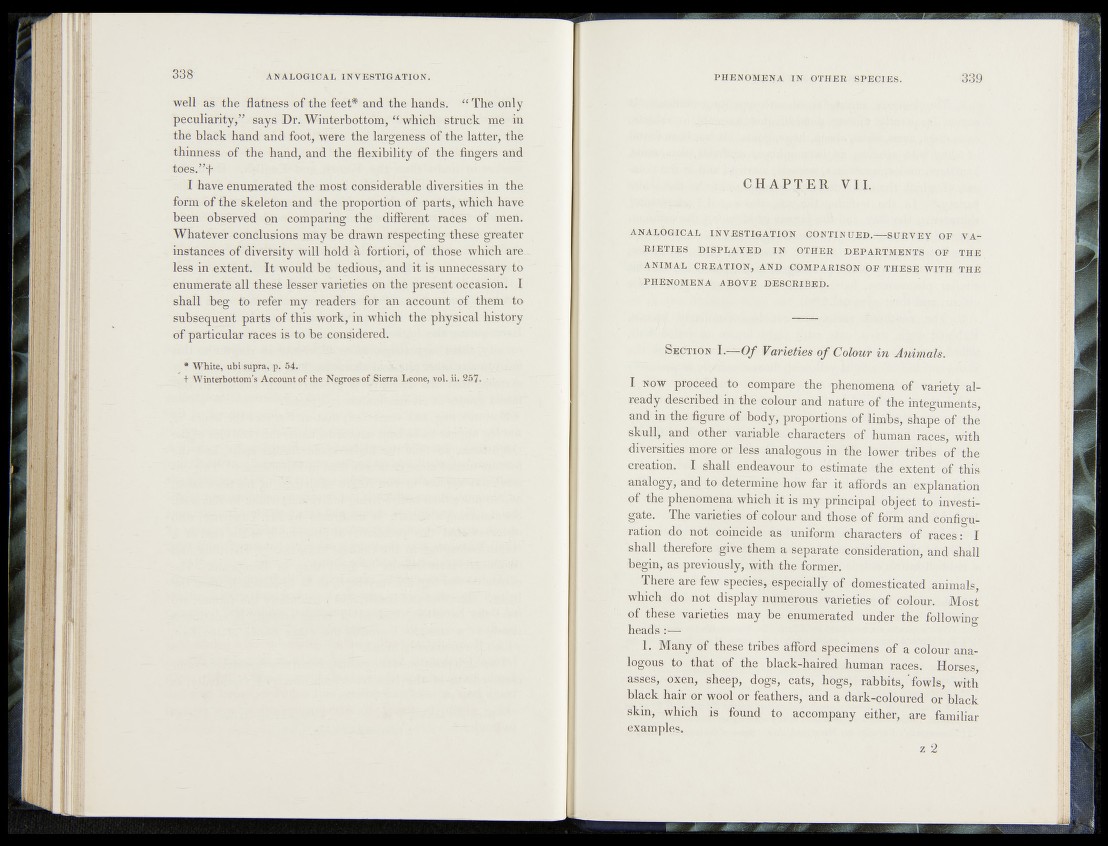
well as the flatness of the feet* and the hands. “ The only
peculiarity Says Dr. Winterbottdm, ^whicft* struck in& ih
the blaCk hand and foot, 'were the largeness of the latter, the
thinness of the hand, and the flexibility of the fingers and
to‘es.’,f
I have enumerated the most considerable diversities in the
form of the skeleton and the proportion of parts, which have
been observed on comparing the ? different races of men.
Whatever conclusions may be drawn respecting these greater
instances of diversity will hold k fortiori, of those which are
less in extent. It would be tedious, and it is unnecessary to
enumerate all these lesser varieties on the present'«iasioni I
shall .beg to refer my readers for an account of them to
subsequent parts of this work, in which the physical history
of particular races is to be considered.
• White, ubi supra, p. 54.
t Winterbottom’s Account of the Negroes of Sierra Leone, wpl. ii, ,* •
CHAPTER VII.
A N A L O G IZ E .INVESTIGATION J@©N'Pj«jpED.—j^BjRVEY OF VA-
J ^ ^ T I ^ S . DISPLAYgD.,/,1 N OTHER /DEPARTMENTS ; OF THE
ANIMAL CREATION, AND COMPARISON OF TH E SE WITH THE
PHENOMENA ABOVE DESCRIBED. -
S ection ~I.— O f Varieties o f Colour in Animals.
I now proceed to compare the phenomena of variety already
described in. the colour and nature of the integuments,
and in the figure of body, proportions o f limbs, shape of the
skull, and other variable characters of human races, with
-diversitiesmore or less analogous in the lower tribes of the
creation. I. shall endeavour to estimate the extent of this
analogy, and to determine how far it affords an explanation
of the phenomena which it is my principal object to investigate.
The varieties of-colour and those of form and configuration
do not coincide as uniform characters of races: 1
shall therefore give them a separate consideration, and shall
begin, as previously, with the former.
There are few species, especially of domesticated, animals,
which do not display numerous varieties ofr colour. Móst
of these varieties may be enumerated under the following
heads ife®1
1. Many of these tribes afford specimens fof a colour analogous
to that of the black-haired human races. Horses,
asses, oxen, sheep, dogs, cats, hogs, rabbits,'fowls, with
black hair or wool or feathers, and a dark-coloured or black
skin,-which is found to accompany either, are familiar
examples.
z 2